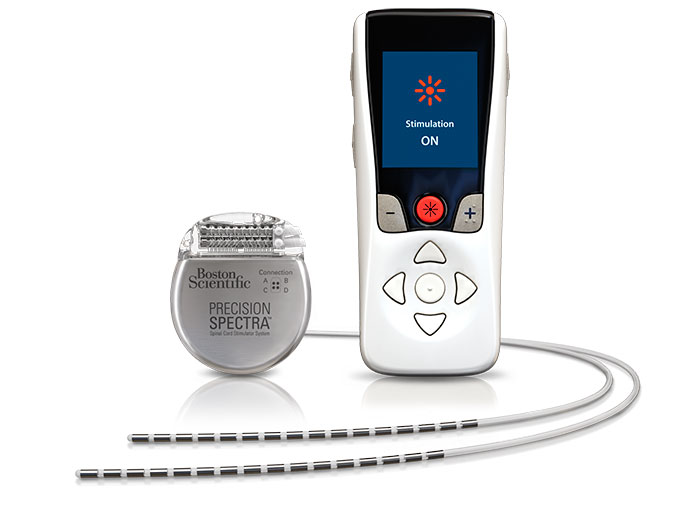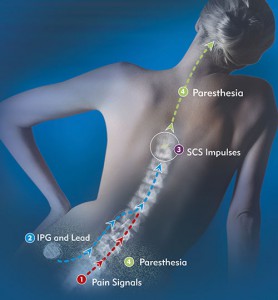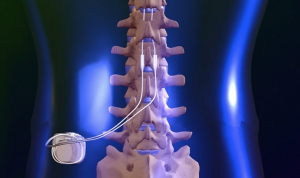Boston Scientific SCS Trial

About Spinal Cord Stimulation
 Spinal Cord Stimulation, or SCS, may offer hope for many of the estimated 100 million people who suffer from chronic pain.1 SCS sends electrical impulses that trigger nerve fibers along the spinal cord, masking the pain message traveling to the brain. When this happens, the painful sensation is replaced with a soothing, tingling sensation.
Spinal Cord Stimulation, or SCS, may offer hope for many of the estimated 100 million people who suffer from chronic pain.1 SCS sends electrical impulses that trigger nerve fibers along the spinal cord, masking the pain message traveling to the brain. When this happens, the painful sensation is replaced with a soothing, tingling sensation.
SCS may be prescribed for chronic intractable pain of the trunk and/or limbs, including unilateral or bilateral pain associated with the following:
- failed back surgery syndrome
- intractable low back pain and
- leg pain.
Many people with failed back surgeries have had success with the SCS. It is most commonly used to treat low back and lower extremity pain. Thousands of patients with severe chronic painful conditions have received relief with spinal cord stimulation.1
About the Procedure
Trialing
One of the advantages of SCS therapy is that the patient gets to “test drive” an external version of the device to see if spinal cord stimulation is a treatment option for their pain. During the “test drive,” insulated leads are inserted through a needle or small incision in an anesthetized area near the spinal cord. As a part of the procedure, the patient may give the physician feedback on where to place the leads for maximum pain reduction. Once the physician locates the “sweet spot,” the leads are connected to an external trial stimulator that is tucked inside an external belt. The patient also gets a wireless remote control so they can increase or decrease the electrical impulses to manage their pain. The external version is typically worn anywhere from a few days to one week. This trial period gives the patient the opportunity to decide if SCS manages their pain.1
Permanent Implantation

After the “test drive”, the patient and physician decide whether or not spinal cord stimulation is a therapy option. If they decide to go forward, then the patient will undergo another surgical procedure to surgically place the Precision™ Implantable Pulse Generator. The leads may be inserted in a procedure similar to an epidural. In some cases, a physician may recommend a surgical lead, also known as a paddle lead. In this case, the paddle lead is placed at the target site during the surgical procedure. Patients may remain awake during this procedure, under local anesthesia and light sedation. In other cases, general anesthesia may be administered.
Besides a cordless remote control, the patient will also receive a portable, cordless charger and a base station for the charger.
1Institute of Medicine Report Brief
The Boston Scientific Neuromodulation Spinal Cord Stimulator (SCS) Systems are indicated as an aid in the management of chronic intractable pain of the trunk and/or limbs, including unilateral or bilateral pain associated with the following:
failed back surgery syndrome, intractable low back pain, and leg pain.
Precision Spinal Cord Stimulator System please refer to the Precision Spinal Cord Stimulator System Clinician Manual.
